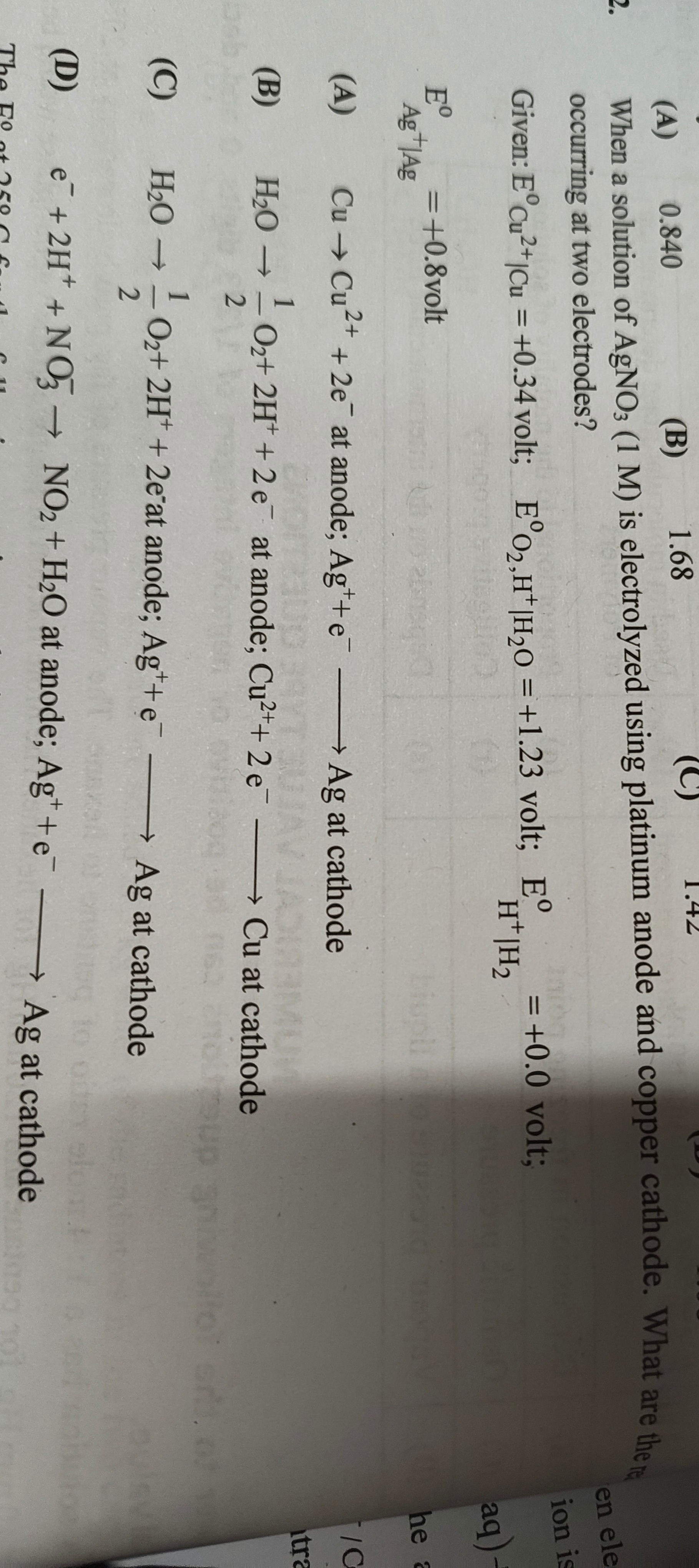Question
Question: When a solution of $AgNO_3$ (1 M) is electrolyzed using platinum anode and copper cathode. What are ...
When a solution of AgNO3 (1 M) is electrolyzed using platinum anode and copper cathode. What are the occurring at two electrodes?
Given: ECu2+∣Cuo=+0.34 volt; EO2,H+∣H2Oo=+1.23 volt; EH+∣H2o=+0.0 volt; EAg+∣Ago=+0.8volt

A
Cu⟶Cu2++2e− at anode; Ag++e−⟶Ag at cathode
B
21H2O⟶21O2+2H++2e− at anode; Cu2++2e−⟶Cu at cathode
C
H2O⟶21O2+2H++2e− at anode; Ag++e−⟶Ag at cathode
D
e−+2H++NO3−⟶NO2+H2O at anode; Ag++e−⟶Ag at cathode
Answer
(C)
Explanation
Solution
Solution Explanation:
Since AgNO₃ is aqueous, at the inert platinum anode water is oxidized:
At the copper cathode, Ag⁺ is reduced to Ag:
Cathode: Ag++e−→AgThus, the correct option is (C).
